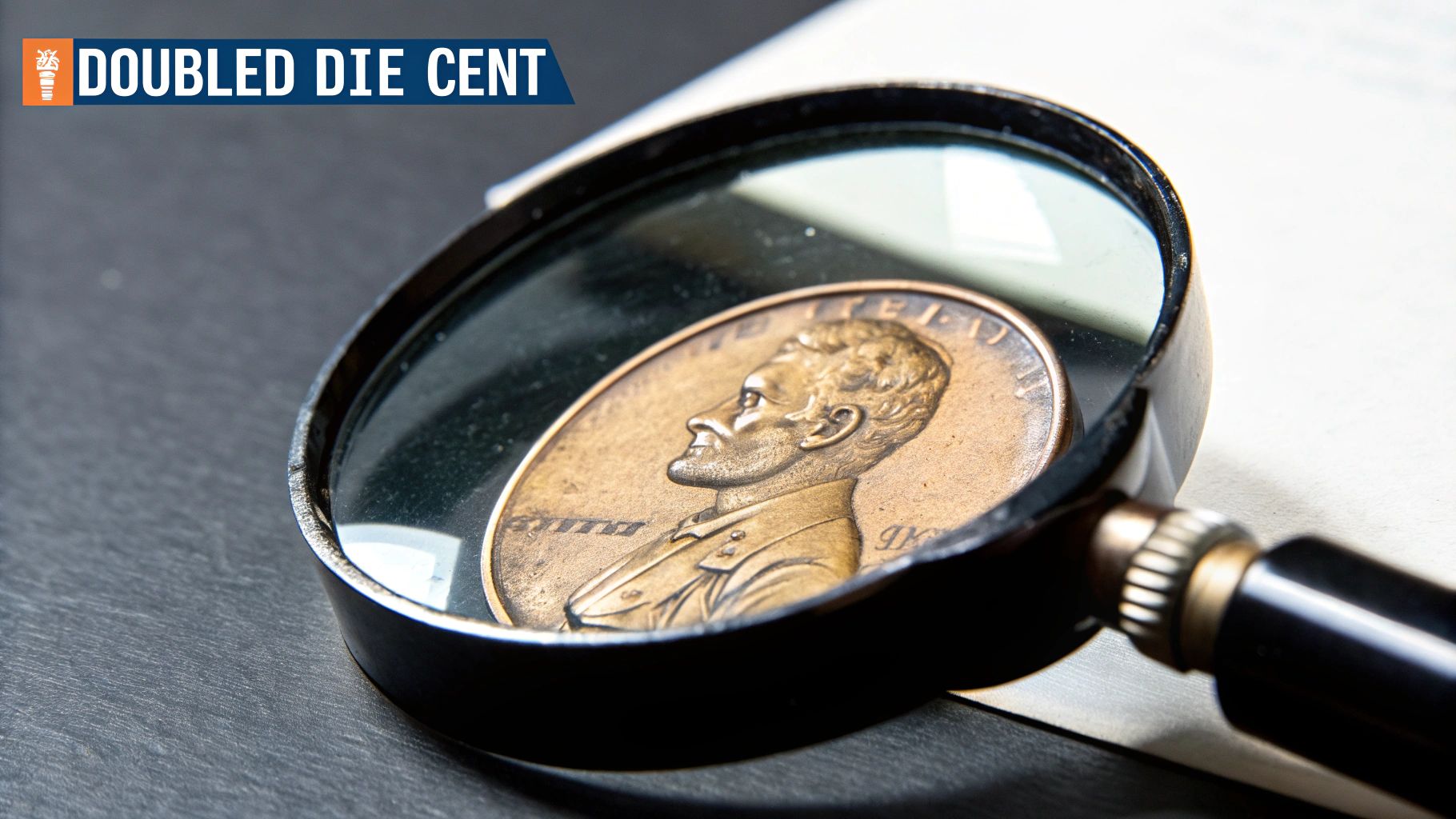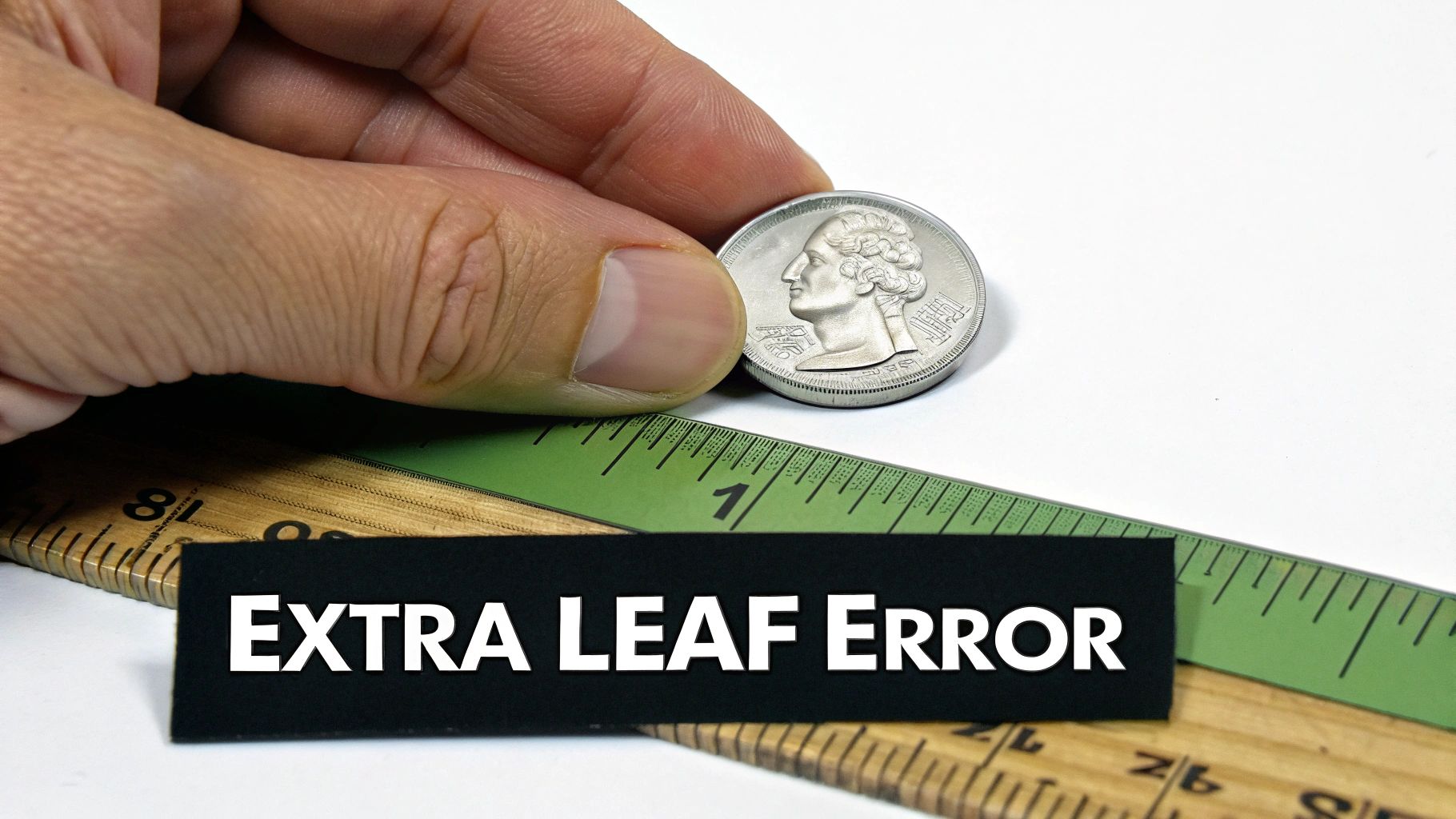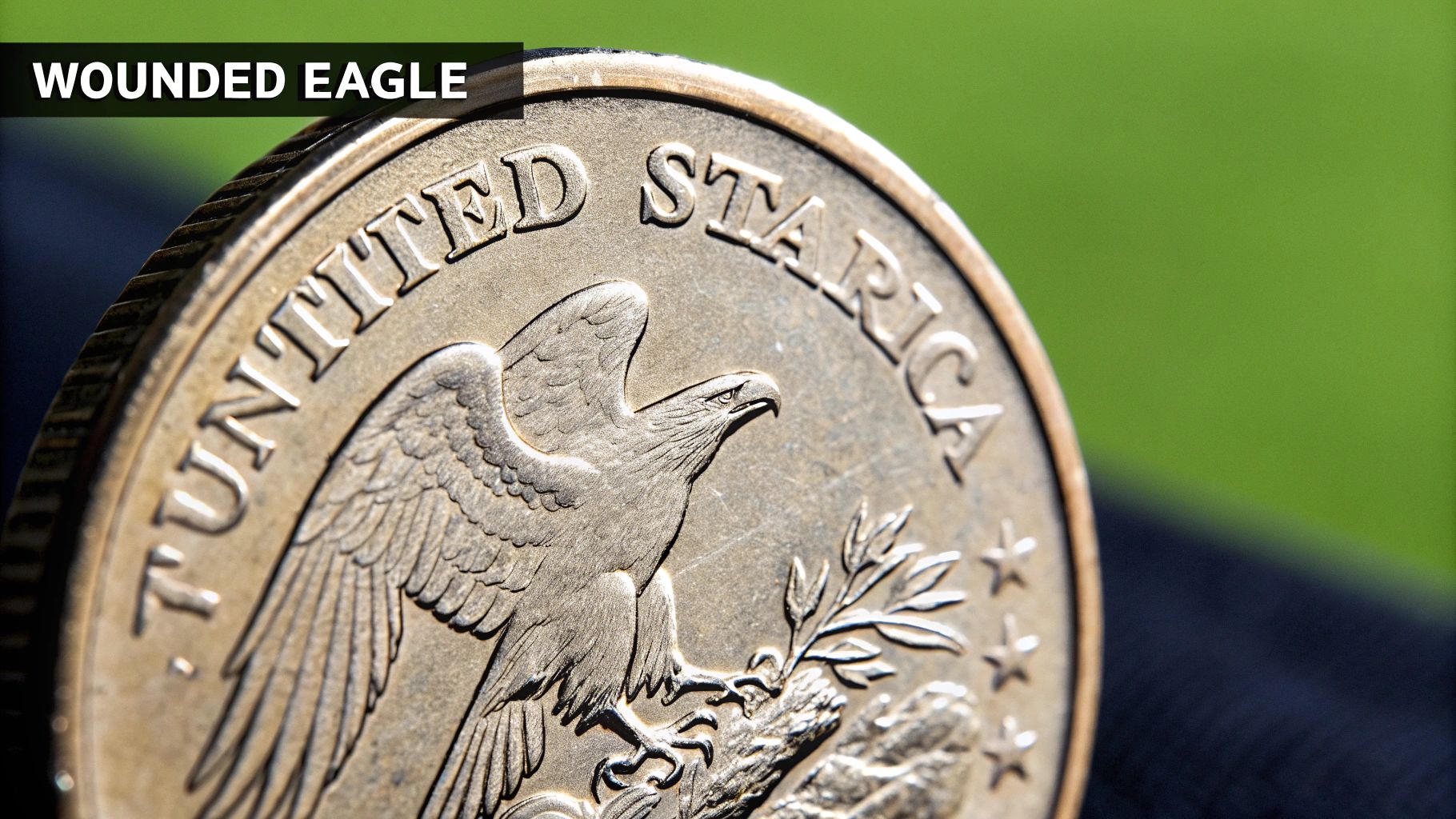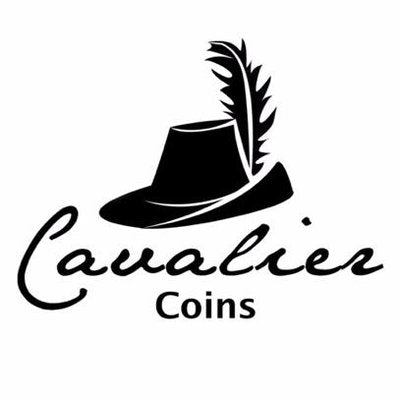Unearthing Numismatic Treasures: A Closer Look at Valuable Errors
Discover six valuable error coins sought by collectors. This list details key identifying features and explains their value. Whether you're a seasoned numismatist, a new collector, or seeking unique inventory, understanding these valuable error coins—like the 1955 Doubled Die Obverse Lincoln Cent and the 2004-D Wisconsin State Quarter Extra Leaf—provides valuable insight into this specialized area of numismatics. Learn to identify these rare finds, including off-center strikes and the 2004-2005 Wisconsin Quarter Die Break 'Cud Error', and potentially enhance your collection's value.
1. 1955 Doubled Die Obverse Lincoln Cent
The 1955 Doubled Die Obverse Lincoln Cent holds a legendary status among valuable error coins in U.S. numismatics. This fascinating error occurred during the die-making process. The hub, which imprints the design onto the die, mistakenly struck the obverse die twice at slightly different angles. This resulted in a noticeable doubling effect on Lincoln's portrait, the date, and inscriptions like "LIBERTY" and "IN GOD WE TRUST." This isn't the subtle "machine doubling" sometimes seen on coins; it's a dramatic, clear duplication that's easily spotted with the naked eye. Estimated at only 20,000-24,000 pieces produced before the Mint discovered the error, the 1955 Doubled Die Obverse Lincoln Cent is a scarce and highly desirable coin for collectors worldwide, solidifying its place on this list of valuable error coins.

This valuable error coin is composed of 95% copper, 5% tin, and zinc, and was struck in Philadelphia, meaning it bears no mint mark. Its striking visual appeal and inherent rarity have led to robust and consistent market demand. This sustained interest makes the 1955 DDO an excellent investment for serious numismatists and a prized acquisition for those building a high-quality Lincoln cent collection. Decades of documented evidence and its inclusion in prominent numismatic literature, such as Walter Breen's Complete Encyclopedia of U.S. and Colonial Coins, further enhance its standing. You can learn more about 1955 Doubled Die Obverse Lincoln Cent.
Features:
- Strong doubling visible on the date, 'LIBERTY', and 'IN GOD WE TRUST'
- Copper composition (95% copper, 5% tin and zinc)
- Minted in Philadelphia (no mint mark)
Pros:
- Easily recognizable, even by novice collectors
- Strong market demand maintains high value
- Documented provenance and numismatic significance
- Consistent value appreciation
Cons:
- Frequently counterfeited
- Many fake "machine doubling" examples are misrepresented as genuine DDOs
- Authentication can be challenging, especially for lower-grade examples
Examples of Value:
- In 2018, a PCGS MS-65 Red example sold for $114,000 at auction.
- Circulated examples in Fine condition can fetch $1,000-$2,000.
- Uncirculated specimens can range from $10,000 to over $100,000 depending on condition.
Tips for Identifying a Genuine 1955 DDO:
- Look for a clear separation of the doubled elements, not a "shelf" or "slide" appearance, which indicates machine doubling.
- Have suspected 1955 DDO cents professionally authenticated by a reputable grading service like PCGS or NGC.
- Study certified examples and reference images to familiarise yourself with the distinctive doubling pattern.
- Focus on the date "1955" for the strongest doubling indicators.
The 1955 Doubled Die Obverse Lincoln Cent is a truly remarkable coin, popularised by numismatic luminaries like Q. David Bowers, and frequently featured in coin collecting media. Whether you are an experienced numismatist, a new collector in the UK, or a reseller seeking valuable inventory, this coin's historical significance, rarity, and investment potential make it a worthy addition to any collection.
2. 2004-D Wisconsin State Quarter Extra Leaf Varieties
Among valuable error coins, the 2004-D Wisconsin State Quarter stands out with its intriguing "extra leaf" varieties. These quarters, part of the popular 50 State Quarters Program, exhibit what looks like an additional corn leaf on the left side of the ear of corn on the reverse. Two main variants exist: the "High Leaf," where the extra leaf points upward, and the "Low Leaf," where it points horizontally. While initially suspected to be an intentional design modification, numismatic experts now largely believe these resulted from die gouges or damage that coincidentally created a leaf-like appearance. This ambiguity, however, hasn't diminished their appeal among collectors, solidifying their status as highly sought-after valuable error coins.

These quarters are particularly interesting because they are a relatively recent error, meaning some may still be found in circulation. The error is easily identifiable with minimal magnification, making them accessible even to newer collectors. Key features include the two distinct varieties (High Leaf and Low Leaf), the Denver mint mark ("D"), and their clad composition (copper-nickel outer layers with a copper core). The error is located on the reverse design, specifically near the ear of corn.
The 2004-D Wisconsin quarter's inclusion in the list of valuable error coins is justified by its strong collector interest, which maintains its value. High-grade MS-65 examples have sold for £240-£400, while circulated examples can still fetch £40-£120. Certified specimens from reputable grading services like PCGS and NGC often command premium prices. Learn more about 2004-D Wisconsin State Quarter Extra Leaf Varieties
However, there are some drawbacks to consider. The ongoing debate over whether these are genuine mint errors or post-mint damage adds an element of uncertainty. Furthermore, numerous counterfeit or altered examples exist, requiring careful scrutiny before purchasing. The value has also fluctuated significantly since the varieties were discovered.
If you’re looking to add this valuable error coin to your collection, here are some actionable tips: Examine the area to the left of the corn stalk on the reverse of any uncirculated 2004-D quarter. Use at least 5x magnification to properly identify the extra leaf, and compare your find with known authentic examples. This is especially important given the prevalence of counterfeits.
The 2004-D Wisconsin quarter’s popularity was significantly boosted by numismatist Ken Potter, who helped bring the variety to the attention of the collecting community. Grading services like NGC and PCGS further legitimized the varieties by certifying them, and publications like Coin World and Numismatic News have featured articles about these intriguing error coins. They represent a fascinating case study in numismatics, appealing to everyone from seasoned experts to new collectors.
3. 2000-P Wounded Eagle (Striking Error) Sacagawea Dollar
The 2000-P Wounded Eagle Sacagawea Dollar stands out among valuable error coins due to a distinctive die gouge across the eagle's image on the reverse. This striking error, occurring during the first year of the Sacagawea dollar's production at the Philadelphia mint, resulted in a raised line that resembles a wound inflicted by a spear or arrow, hence the evocative nickname. While technically a die state rather than a die variety, its visual impact and limited production run before the die was corrected have propelled it to significant collector status. This "wound" adds considerable value to an otherwise common dollar coin, making it a highly sought-after piece for both novice and seasoned collectors.

The error arose from damage to the die used to strike the reverse of the coin. This resulted in a raised, incused line on every coin struck from that specific die until it was replaced. The gouge is easily identifiable with minimal magnification, making it an attractive error for collectors of all levels. This particular error holds historical significance as it marks a blemish on the first-year issue of the Sacagawea Dollar, a coin intended to replace the Susan B. Anthony dollar, which proved unpopular due to its similarity in size and appearance to the quarter.
Features:
- Prominent die gouge across the eagle's body on the reverse
- Philadelphia mint mark (P)
- Golden manganese-brass clad composition
- First-year issue of the Sacagawea Dollar (2000)
Pros:
- Distinctive error easily identified, even without magnification
- Limited mintage before the damaged die's replacement
- Strong collector demand fueled by its association with the relatively short-lived Sacagawea series
- Historical importance as a first-year issue error
Cons:
- Potential confusion with post-mint damage (scratches, etc.)
- Difficulty finding circulated examples due to the limited circulation of Sacagawea dollars in the UK and elsewhere
- Market values can be somewhat volatile
Examples of Value:
- Uncirculated examples: £150-£400
- MS-67 graded specimens: Over £800 at auction
- Even circulated examples can command £80+
Tips for Identifying a Genuine Wounded Eagle:
- Examine the eagle on the reverse under good lighting.
- Look for a distinctive raised line traversing the eagle's body, typically from right to left.
- Ensure the mark is raised (incused, part of the minting process), not a scratch or depression.
- Verify it's a Philadelphia mint example from 2000 (indicated by the "P" mint mark).
Popularized By:
- Fred Weinberg (renowned error coin specialist)
- CONECA (Combined Organizations of Numismatic Error Collectors of America)
- Featured in The Cherrypickers' Guide to Rare Die Varieties
This error's unique visual characteristic, its ease of identification, and its historical context within the Sacagawea dollar series firmly establish the 2000-P Wounded Eagle as a valuable error coin worthy of inclusion in any serious numismatic collection. Whether you're a seasoned numismatist, a novice collector, or simply fascinated by the quirks of currency production, the Wounded Eagle offers a compelling and affordable entry point into the world of valuable error coins.
4. 1972 Doubled Die Obverse Lincoln Cent
The 1972 Doubled Die Obverse Lincoln Cent is a highly desirable addition to any collection of valuable error coins. Its combination of historical significance, relative affordability (compared to other major doubled dies), and striking visual appearance makes it appealing to both seasoned numismatists and those new to the hobby. This doubled die error occurred during the creation of the die used to strike the coins. The die received two impressions from the hub, slightly offset, resulting in a clear doubling effect on the coin's obverse (front). This isn't just a minor imperfection; the doubling is readily apparent on the date, "LIBERTY," and "IN GOD WE TRUST." This distinct error secures its place amongst the most sought-after valuable error coins, especially within the realm of Lincoln cents.
This particular error is a fantastic example of how valuable error coins can arise from unexpected production flaws. The doubling on the 1972 DDO is strong enough to be easily spotted with the naked eye, making it a rewarding find even for novice collectors. While not as dramatically doubled as the famed 1955 doubled die, the 1972 DDO is significantly more affordable, offering an accessible entry point into the world of high-value error coinage. Furthermore, its copper composition (95% copper, 5% zinc), characteristic of pre-1982 pennies, adds to its appeal for collectors focused on that era. These coins were struck at the Philadelphia mint, hence they bear no mint mark.
Features and Benefits:
- Strong Doubling: The prominent doubling on the date, "LIBERTY," and "IN GOD WE TRUST" is a key identifier and adds to its value.
- Relative Affordability: Compared to the 1955 DDO, the 1972 version is considerably more budget-friendly.
- Potential for Discovery: With an estimated mintage of 20,000-40,000, these coins can still occasionally be found in circulation, adding a "treasure hunt" element to collecting.
- Stable Collector Demand: This well-documented and recognised variety enjoys consistent demand, making it a relatively stable investment within the numismatic market.
Pros:
- More affordable than the 1955 DDO while still holding significant value.
- Can still be discovered in circulation, particularly within rolls of pre-1982 pennies.
- Strong doubling visible even without magnification.
- Well-documented variety ensuring consistent collector interest.
Cons:
- Several minor doubled die varieties from 1972 exist, which can create confusion for less experienced collectors.
- Counterfeits and instances of Machine Doubling (MD) are frequently misrepresented as genuine 1972 DDOs.
- The copper composition makes uncirculated examples susceptible to spotting and toning.
Examples of Value:
- Circulated (VF-XF): £115 - £230
- Mint State (MS-65 Red): £385 - £770
- High-Grade Examples: A PCGS MS-67 Red example sold for over £10,700 in 2019, demonstrating the potential for significant appreciation.
Tips for Identifying a Genuine 1972 DDO:
- Focus on "LIBERTY": The doubling is most pronounced on this word, making it a prime area for initial inspection.
- Use Magnification: Use at least 5x magnification to verify the doubling characteristics.
- Compare with Authentic Examples: Consult reputable sources like the Cherrypickers' Guide or certified examples from PCGS and NGC to familiarise yourself with the genuine article.
- Check Rolls of Pre-1982 Pennies: These offer the best chance of finding a 1972 DDO in circulation within the UK, although pre-decimalisation pennies are no longer legal tender.
The 1972 Doubled Die Obverse Lincoln Cent offers a unique opportunity for collectors of all levels to own a piece of numismatic history. Whether you are an experienced numismatist or a beginner just starting your collection, this valuable error coin deserves serious consideration.
5. Off-Center Strike Errors
Off-center strike errors are highly sought-after valuable error coins, prized by collectors for their dramatic appearance and intriguing origin. These errors occur when the planchet (the blank metal disc from which a coin is made) is not correctly aligned between the dies during the striking process. This misalignment results in only a portion of the coin's design being imprinted, leaving a blank area showing the bare planchet. The resulting coin showcases an incomplete design, often dramatically cropped, revealing the plain metal of the planchet where the die failed to make contact. This gives the coin a unique and easily identifiable appearance. The degree of misalignment, visibility of the date, and the coin's denomination are primary factors influencing their value.

The infographic above provides a decision tree to help assess the value of an off-center strike error. It guides you through key factors like the percentage off-center and date visibility, leading to estimated value ranges. For instance, a coin 5-49% off-center with a visible date is considered "desirable" and falls within a specific price range, while a coin more than 90% off-center, even without a date, is categorized as "rare" and commands a potentially higher price. This decision flow helps collectors quickly assess the potential value of their finds. As the infographic demonstrates, the sweet spot for maximum value tends to be coins struck 50-75% off-center with a clear, complete date.
Off-center strikes earn a place on the list of valuable error coins due to their striking visual appeal, the wide range of values across different denominations and off-center percentages, and the fact they can still be found in circulation. Examples of notable sales include a 1999 Lincoln cent struck 80% off-center fetching £200, a 2007-D State Quarter 60% off-center with a full date exceeding £400, and a 1999 Silver Eagle 40% off-center selling for over £12,000. These examples demonstrate the wide range of potential value in these intriguing errors.
Pros:
- Visually Distinctive: The incomplete design and exposed planchet make these errors instantly recognizable.
- Accessibility: They occur across all denominations and years, making them attainable for collectors of all levels.
- Range of Values: From minor misalignments to extreme off-centers, there are options for various budgets.
- Still Found in Circulation: The thrill of potentially discovering one in your pocket change adds to their appeal.
Cons:
- Date Dependence: A missing date significantly impacts value.
- Minor Off-Centers: Slightly off-center strikes (less than 10%) hold minimal premium.
- Storage Challenges: Their irregular shape can make storage and display difficult.
- Grading Complexity: Consistent grading can be challenging due to the varied nature of the error.
Tips for Collectors:
- Prioritize examples with a fully visible date.
- Higher denominations (quarters, half dollars, and dollars) command higher premiums.
- The 50-75% off-center range generally offers the best balance of rarity and visual appeal.
- Use specialized holders designed for error coins to prevent damage to the exposed planchet.
Learn more about Off-Center Strike Errors
These off-center strike errors, popularized by experts like Fred Weinberg and Jon Sullivan and featured in publications like CONECA ErrorScope, are valuable additions to any error coin collection, appealing to both seasoned numismatists and those just beginning their collecting journey. They represent a fascinating glimpse into the intricacies of the minting process and the unexpected beauty that can arise from error.
6. 2004-2005 Wisconsin Quarter Die Break 'Cud Error'
The 2004-2005 Wisconsin State Quarter, part of the popular 50 State Quarters series, offers a fascinating variety for collectors of valuable error coins: the "Cud Error." This intriguing anomaly earns its place on our list due to its verifiable authenticity, relative scarcity, and the potential for significant appreciation in value.
A "cud," in numismatic terms, refers to a raised, blob-like area on a coin caused by a broken piece of the die. During the striking process, this broken piece (the cud) leaves a void in the die's design. When the die strikes a blank planchet, the metal flows into this void, creating the raised, amorphous blob on the finished coin. On the Wisconsin quarter, these cuds most commonly appear near the cheese portion of the reverse design, leading to the playful nickname "Extra Cheese Quarter." This sets it apart from other controversial varieties like the "Extra Leaf" Wisconsin quarter, whose authenticity is debated among collectors. Cuds, however, are universally recognised as genuine mint errors resulting from die degradation or damage.
Features and Benefits:
- Easily identifiable (with magnification): While smaller cuds might require a magnifying glass for confirmation, larger ones are readily visible to the naked eye. This accessibility makes them appealing to both novice and experienced collectors.
- Variety in size and value: Cuds range in size from tiny imperfections to substantial blobs covering a significant portion of the design. This variability creates collecting opportunities at different price points, allowing collectors with diverse budgets to acquire an example.
- Availability: While not excessively common, Wisconsin Quarter cud errors can still be found in circulation, adding a "treasure hunt" aspect to collecting. They are also readily available through coin dealers and online marketplaces.
- Authenticity: Unlike some controversial State Quarter varieties, cuds are undeniably genuine mint errors, increasing their desirability and value among serious numismatists.
Pros:
- Unquestionably authentic mint errors.
- Part of the popular 50 State Quarters series, accessible to UK collectors.
- Still found in circulation, offering opportunities for discovery.
- Various cud sizes cater to different budgets.
Cons:
- Smaller cuds may be difficult to identify without magnification.
- Can be confused with struck-through grease errors, demanding careful examination.
- Multiple cud varieties exist, potentially confusing new collectors.
- Lower overall collector awareness compared to the 'Extra Leaf' Wisconsin Quarter varieties.
Examples and Value:
- Major cuds covering 25% or more of the cheese design have sold for £80-£240.
- Smaller cuds typically sell for £15-£40, depending on size and location.
- Certified examples from reputable grading services like PCGS and NGC command premium prices.
Tips for Collectors:
- Examine Wisconsin quarters under strong light, specifically focusing on the cheese portion of the reverse design.
- Look for raised, blank areas with a distinct raised edge where the die broke. This distinguishes a true cud from other imperfections.
- Store your cud error coins in mylar flips or protective holders to prevent damage to the raised features.
Popularized By:
- Mike Diamond (error coin specialist and author)
- State quarter collectors
- Numismatic publications (including Coin World)
The Wisconsin Quarter cud error represents an excellent opportunity for collectors of valuable error coins. Its verifiable authenticity, combined with its accessibility and the thrill of the hunt, makes it a worthwhile addition to any collection. Whether you are an expert numismatist, a new collector, or somewhere in between, this fascinating error coin deserves your consideration.
Top 6 Valuable Error Coins Comparison
| Coin Variety | Implementation Complexity 🔄 | Resource Requirements ⚡ | Expected Outcomes 📊 | Ideal Use Cases 💡 | Key Advantages ⭐ |
|---|---|---|---|---|---|
| 1955 Doubled Die Obverse Lincoln Cent | High – Die doubled at hub with offset | Specialized minting process; die hubbing | Dramatic doubling on date and inscriptions | Collectors seeking rare, valuable error coins | Highly recognizable; strong value appreciation |
| 2004-D Wisconsin State Quarter Extra Leaf Varieties | Moderate – Die gouge or damage producing leaf shapes | Standard mint with die damage or gouge | Visible extra corn leaf on reverse | Collectors interested in recent State Quarters errors | Easily identifiable; still found in circulation |
| 2000-P Wounded Eagle Sacagawea Dollar | Moderate – Die gouge on reverse die | Normal die creation with accidental damage | Raised line or "wound" on eagle belly | Modern error coin collectors; Sacagawea series enthusiasts | Distinctive error; historical first-year significance |
| 1972 Doubled Die Obverse Lincoln Cent | High – Die doubled similar to 1955 DDO | Hub doubling process during die creation | Strong doubling on date and inscriptions | Budget-conscious collectors of doubled die errors | More affordable than 1955 DDO; still valuable |
| Off-Center Strike Errors | Low to High – Misaligned planchet placement | Normal minting but requires planchet misfeed | Partial design, varying off-center degree | Error collectors across denominations and dates | Dramatic appearance; found on many coin types |
| 2004-2005 Wisconsin Quarter Die Break 'Cud Error' | Low – Die break during production | Standard minting with die wear or breakage | Raised blank areas (cuds) on design | Collectors of modern die breaks and State Quarters | Universally accepted error; collectible at multiple price points |
Start Your Error Coin Hunt Today!
From the doubled die 1955 and 1972 Lincoln Cents to the intriguing extra leaf and cud errors on the 2004-2005 Wisconsin State Quarters, valuable error coins offer a fascinating glimpse into the minting process. Understanding these errors, like the striking error on the 2000-P Sacagawea Dollar or the dramatic off-center strikes, is key to identifying potentially valuable coins in your own collection or even your pocket change. Remember, the rarity and condition of these valuable error coins are significant factors influencing their worth. Mastering these concepts empowers you to appreciate the unique history and artistry of numismatics, opening doors to a rewarding collecting journey.
For some collectors, the value of these rare finds extends beyond their monetary worth. Building a specialized collection of error coins can become a passion, a connection to history, and even a smart investment. Those looking for opportunities in the wider digital economy might be interested in the lucrative world of online businesses. Looking to turn a profit by investing in and growing digital businesses? Check out this case study on how one buyer tripled their investment in under a year: how to spot a SaaS business worth flipping. So, start examining your change, explore online resources, and delve into the exciting world of valuable error coins. You never know what treasures await!
Ready to expand your collection of valuable error coins? Cavalier Coins Ltd offers a vast selection of coins and banknotes, including sought-after error varieties, perfect for both seasoned numismatists and those new to the hobby. Visit Cavalier Coins Ltd today and discover the exciting world of numismatic errors.

